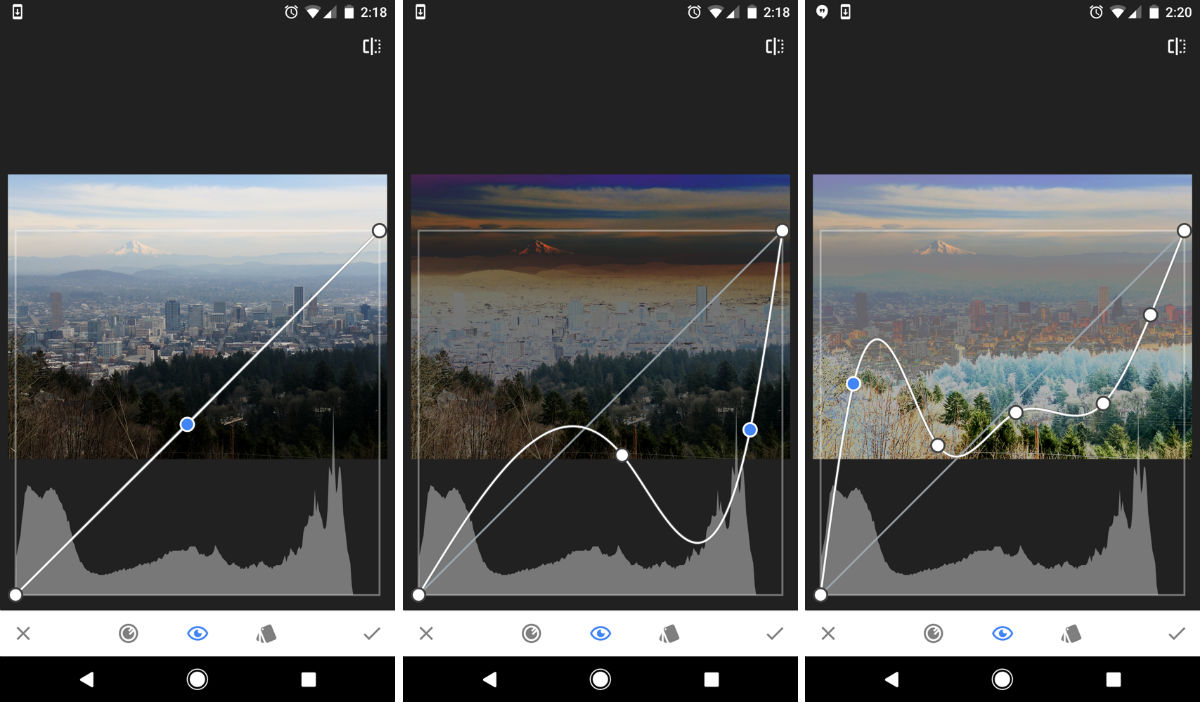
Text – add both stylized or plain text (38 predefined styles). Vignette – add a soft darkness around the corners like a beautiful, wide-aperture would do. Healing – remove the uninvited neighbor from a group picture. Selective – the renown “Control Point” technology: Position up to 8 points on the image and assign enhancements, the algorithm does the rest magically.  Brush – selectively retouch exposure, saturation, brightness or warmth. White Balance – adjust the colors so that the image looks more natural. Perspective – fix skewed lines and perfect the geometry of horizons or buildings. Rotate – rotate by 90°, or straighten a skewed horizon. Crop – crop to standard sizes or freely. Details – magically brings out surface structures in images. Tune image – adjust exposure and color automatically or manually with fine, precise control. RAW Develop – open and tweak native camera files save non-destructively or export as JPG. Tutorial cards with tips and tricks about Snapseed and general photography. All styles can be tweaked with fine, precise control. Save your personal looks and apply them to new photos later. 29 Tools and Filters, including: Healing, Brush, Structure, HDR, Perspective (see list below). Snapseed is a complete and professional photo editor developed by Google. That would be pretty awesome and I genuinely hope this happens at some point down the road.The Dark Theme is now available in Settings
Brush – selectively retouch exposure, saturation, brightness or warmth. White Balance – adjust the colors so that the image looks more natural. Perspective – fix skewed lines and perfect the geometry of horizons or buildings. Rotate – rotate by 90°, or straighten a skewed horizon. Crop – crop to standard sizes or freely. Details – magically brings out surface structures in images. Tune image – adjust exposure and color automatically or manually with fine, precise control. RAW Develop – open and tweak native camera files save non-destructively or export as JPG. Tutorial cards with tips and tricks about Snapseed and general photography. All styles can be tweaked with fine, precise control. Save your personal looks and apply them to new photos later. 29 Tools and Filters, including: Healing, Brush, Structure, HDR, Perspective (see list below). Snapseed is a complete and professional photo editor developed by Google. That would be pretty awesome and I genuinely hope this happens at some point down the road.The Dark Theme is now available in Settings 
If I’m wishing, I’d love for Google Photos integration right in the Photos folder in the Files app. I love that this works, but I’d LOVE to see the same integration in the Chrome OS files app. It doesn’t really hurt to have it there and I’ll still continue using the web interface for my work on the desktop, but now on the occasion I use Photoshop Express for something, I’ll be able to drop in files directly instead of downloading them from the web and importing from my Downloads folder. However, I had an email today asking why Android apps don’t have basic access to Google Photos and, as I began looking, I realized it was all tied to having that app installed and set up on my Chromebook.

I don’t use a ton of Android apps on my Chromebook anyway, so I tend to not even notice this option missing. Because of this, I tend to forget to install the Android app or set it up on my Chromebook at all. I like the web interface and it is my go-to for photo edits and sharing when I’m at my Chromebook. I, for one, use on a daily basis on my Chromebook. While this seems crazy-simple, I totally understand the issue.







 0 kommentar(er)
0 kommentar(er)
